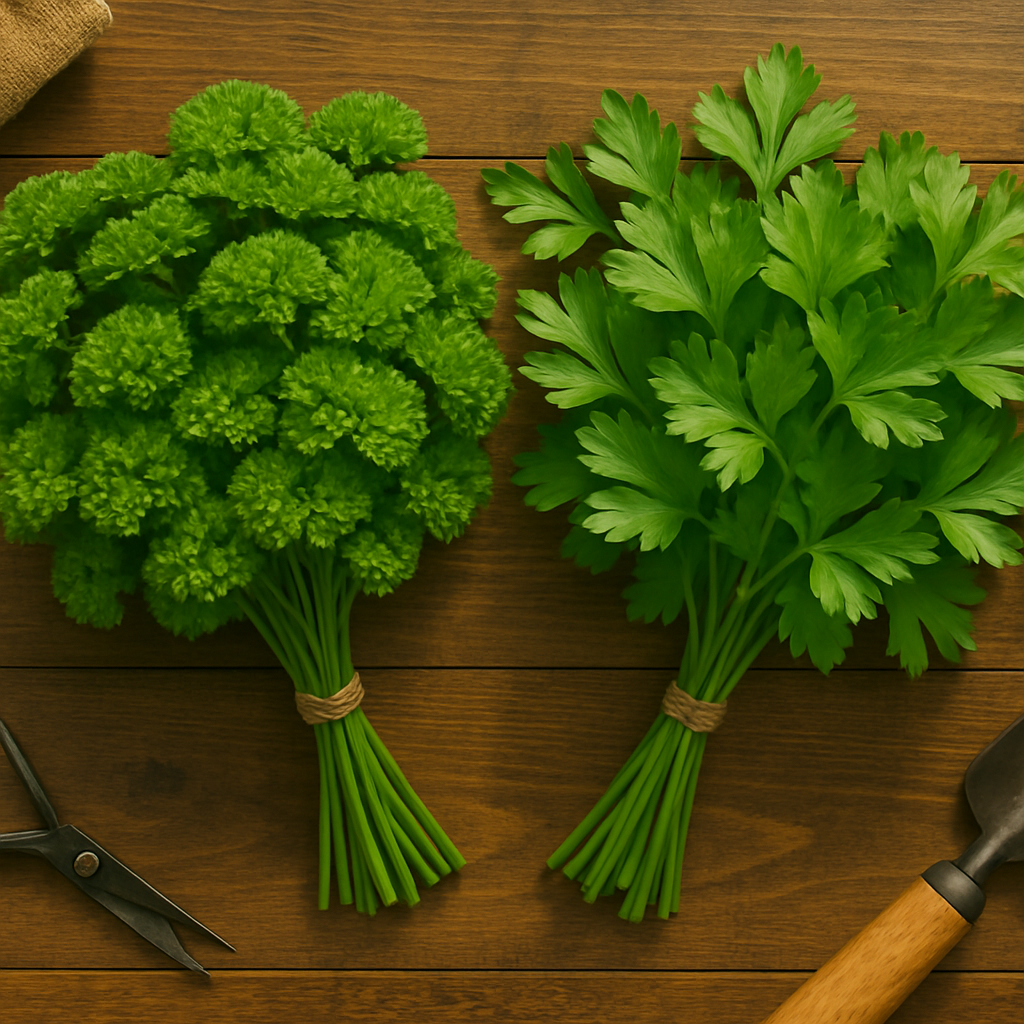Introduction to Parsley Varieties
Curly vs. flat-leaf parsley is a common debate among herb enthusiasts and home cooks alike. Parsley is one of the most popular and versatile herbs you’ll find in backyard gardens and bustling kitchens around the world. It thrives in many climates, is easy to grow, and brings a bright, fresh flavor to countless dishes.
But did you know there are actually two main types of parsley, each with its own unique qualities? Curly-leaf parsley, with its tightly ruffled, vibrant leaves, often doubles as a decorative garnish on plates and salads. On the other hand, flat-leaf parsley, also known as Italian parsley, sports broader, flat leaves and is favored by chefs for its bold, clean taste in everything from sauces to soups.
While they look and taste different, both types bring their own strengths to the table, whether you’re aiming for visual flair or maximum flavor. In this article, we’ll help you decide between curly and flat-leaf parsley by exploring their differences in appearance, taste, growing habits, and the best ways to use each in your kitchen. Whether you’re planning your garden or your next recipe, you’ll know exactly which parsley variety is right for you.
Appearance and Growth Habits
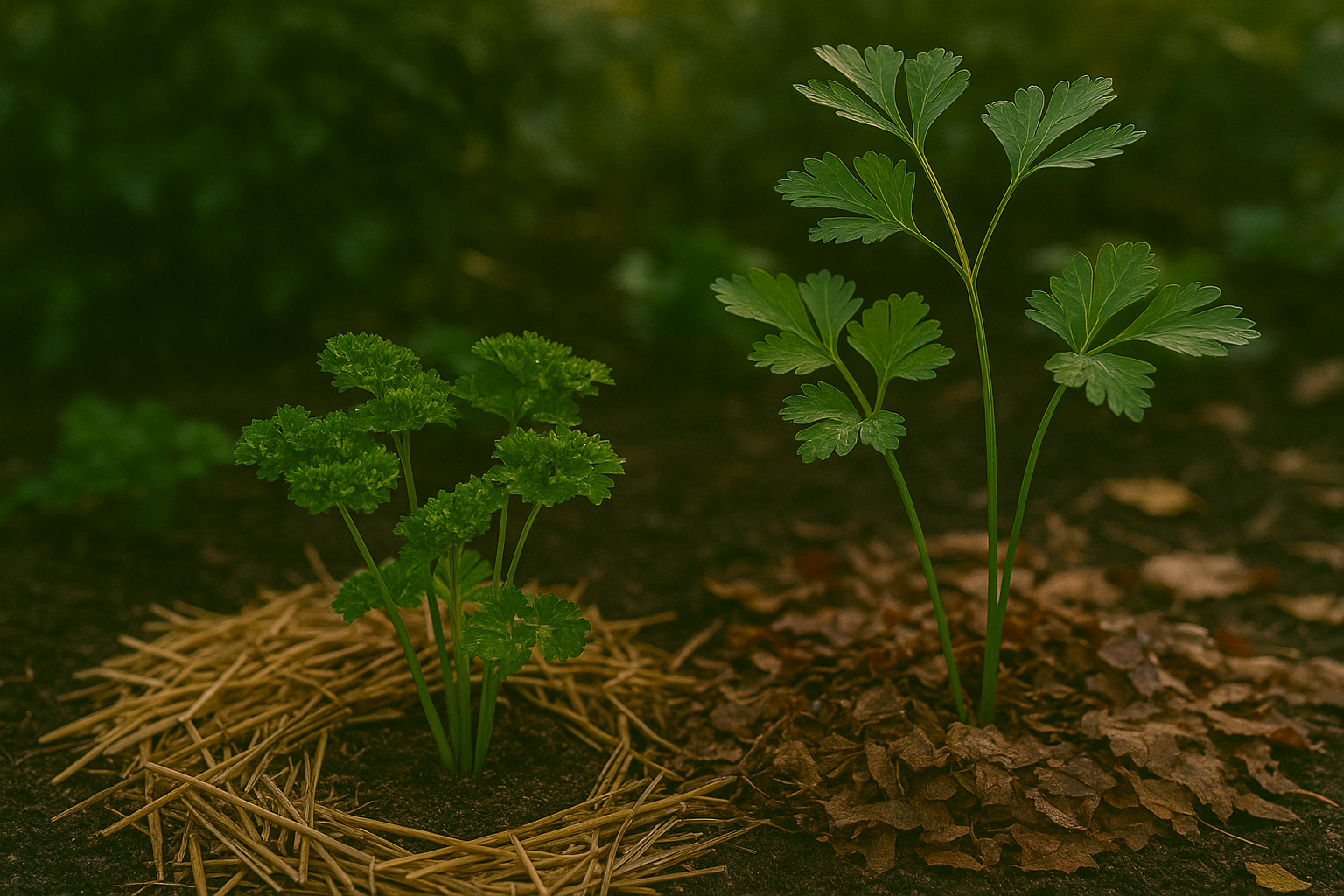
Curly and flat-leaf parsley may belong to the same family, but their appearance and growth habits are easy to tell apart once you know what to look for. Curly parsley features tightly ruffled, bright green leaves held on thin, sturdy stems, giving the plant a compact, bushy look that reaches about 10–12 inches tall. Flat-leaf parsley, also called Italian parsley, has smoother, broader leaves resembling cilantro. These grow on slender but slightly longer stems that often reach up to 18 inches.
The differences in leaf shape make curly parsley a favorite for decorative garnishes—the frilly leaves hold their shape and color on plates—while flat-leaf parsley is more often chosen for cooking, as its flavor is bolder and the leaves are easier to chop without bruising. In landscaping, curly parsley’s lush, dense foliage makes it an attractive border plant, whereas flat-leaf’s open growth habit excels in mixed herb gardens.
When identifying seedlings, curly parsley will already show slight frilling on its first true leaves, while flat-leaf seedlings have smoother, lance-shaped leaves. Both types prefer rich, moist soil and partial sun, but curly parsley is a bit more tolerant of cooler temperatures. Flat-leaf parsley, on the other hand, grows quickly with more heat and a touch more water.
Knowing these subtle differences lets you pick the right parsley for your garden or kitchen needs and helps you spot healthy plants early on, whether from seed trays or garden beds.
Flavor and Culinary Uses
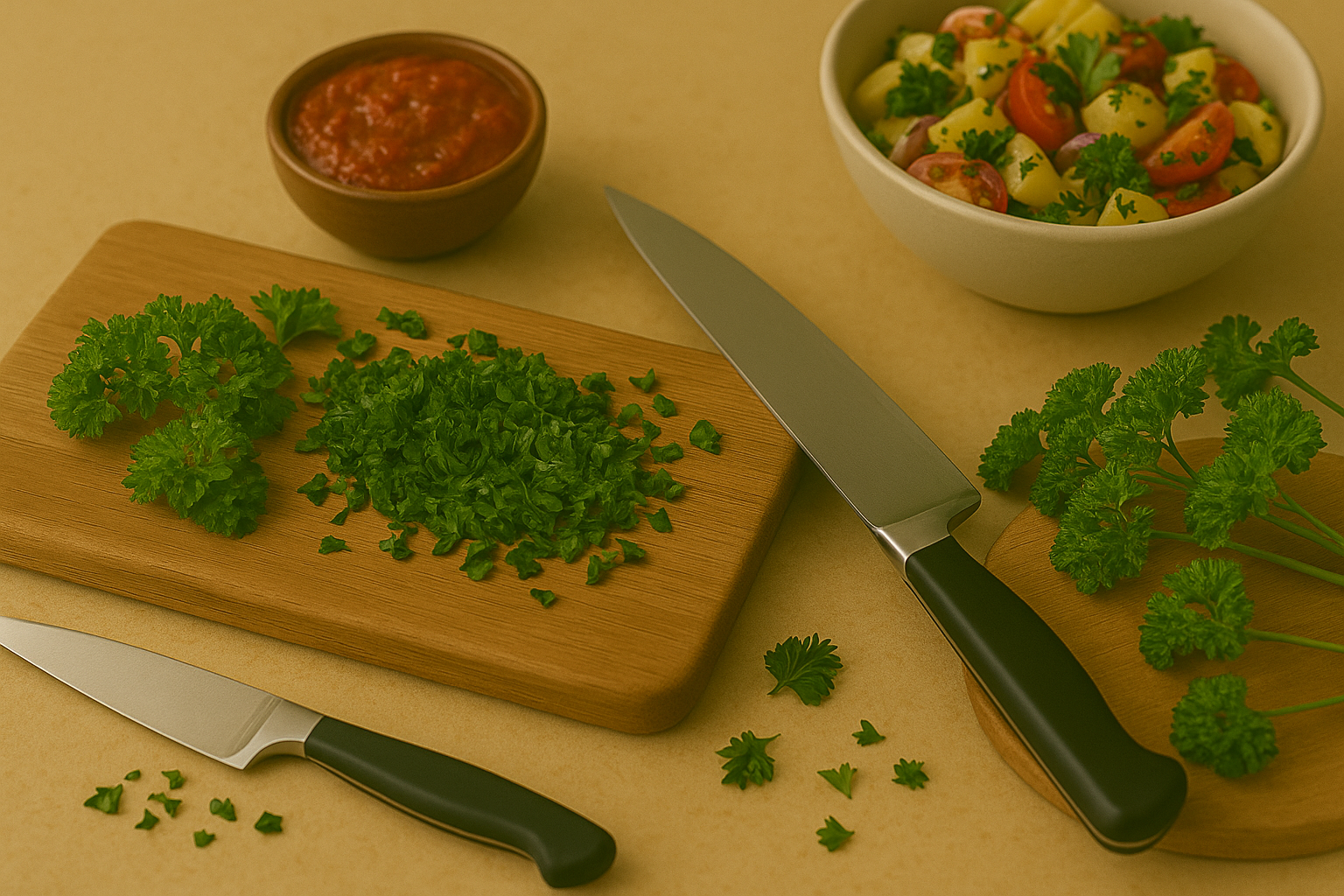
When it comes to flavor, flat-leaf and curly leaf parsley offer distinct experiences that influence how they’re used in the kitchen. Flat-leaf parsley, also known as Italian parsley, delivers a robust, slightly peppery taste that stands up well in cooked dishes, making it a favorite among professional chefs. This bolder flavor penetrates soups, stews, and sauces, enhancing savory profiles without overpowering them. Its tender leaves are easy to chop and blend smoothly into gremolatas, chimichurris, and pestos—dishes where parsley’s taste really shines.
In contrast, curly leaf parsley is milder and carries a subtle grassy note, making it a crisp, refreshing option for garnishing. Its ruffled texture holds up well as a decorative topping, perfect for finishing plates, sprinkling on eggs, or adding to potato salads for a hint of freshness. However, curly leaf’s delicate flavor tends to get lost when cooked, so it’s better suited for raw applications or as a visual accent.
Most dried parsley found in spice aisles comes from curly varieties, but drying severely diminishes the herb’s flavor, turning it into more of a color booster than a taste contributor. That’s why if you want to pack your meals with freshness and depth, flat-leaf parsley—whether used in a pot of homemade soup or finely chopped into tabbouleh—should be your go-to.
To maximize both visual appeal and flavor, try using both types together: a touch of curly for garnish and flat-leaf for robust taste.
Growing and Caring for Each Type
When growing two types of basil—sweet basil and Thai basil—understanding their unique needs ensures strong, flavorful plants. Both thrive in full sun, so choose a spot with six or more hours of direct light daily.
Sweet basil prefers rich, well-drained soil, while Thai basil can tolerate slightly poorer soils but still dislikes soggy roots. Amend the soil with compost before planting, whether in the ground or containers.
Water both consistently, allowing the top inch of soil to dry before the next watering—overwatering can lead to root rot.
Sweet basil grows quickly but is more tender and less cold-hardy, so plant it after the last frost and pinch back the tips regularly to encourage bushiness. Thai basil is hardier, resists more pests, and requires less maintenance, making it a great choice for busy gardeners or hotter climates.
For containers, choose pots at least 8–12 inches wide, and use a lightweight potting mix for good drainage. In both settings, avoid overcrowding to improve airflow and reduce disease risk.
To maximize flavor, harvest leaves often, especially before the plant flowers; with Thai basil, the purple stems and flowers are edible too!
Mulch around both types to retain moisture and suppress weeds. For rich, aromatic leaves, occasionally feed with a balanced, organic fertilizer, but don’t overdo it—too much nitrogen will reduce flavor intensity.
Regular care and selective harvesting will keep your basil lush and full of taste throughout the season.
Harvesting, Using, and Storing Parsley
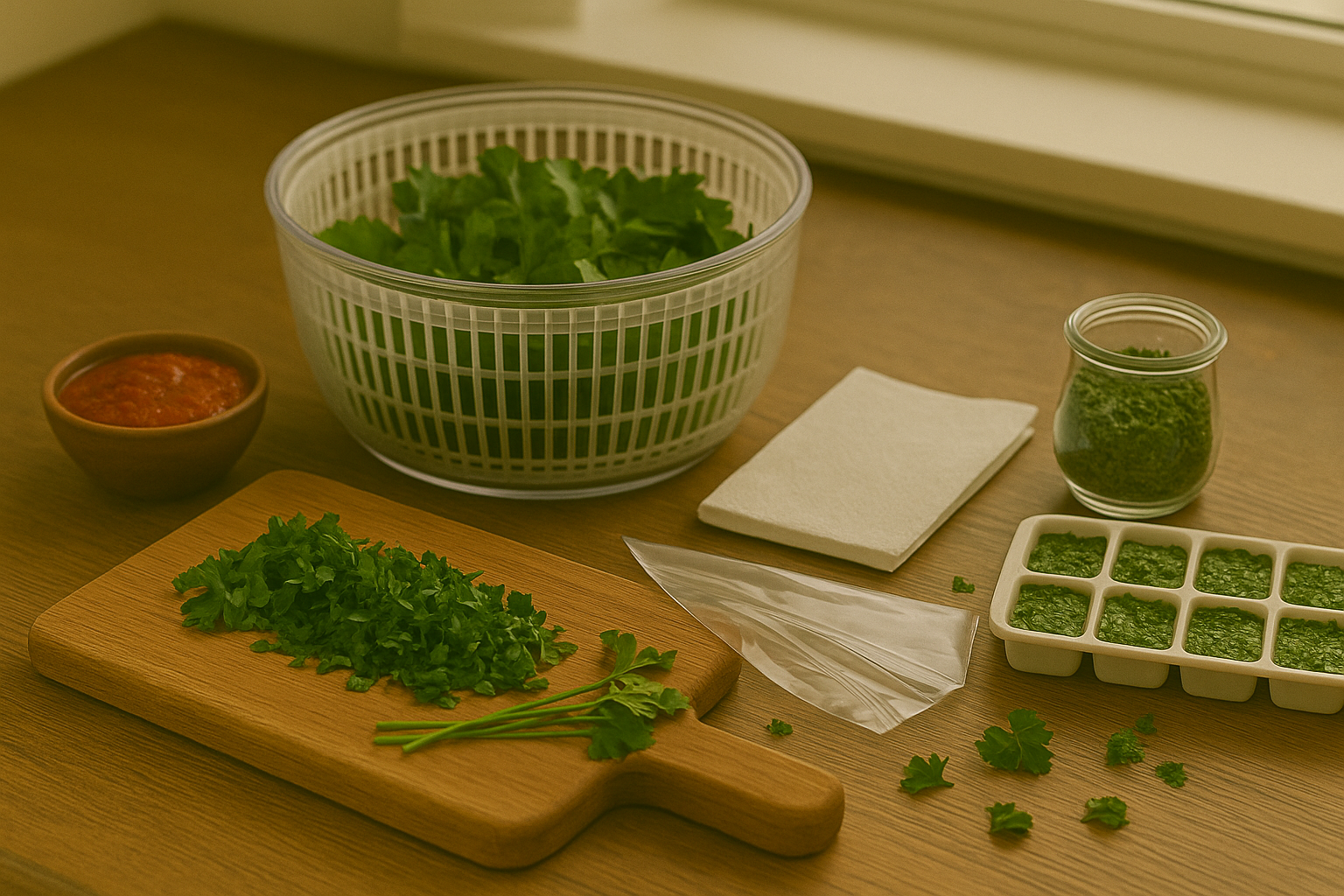
Harvesting parsley at the right time ensures you get the freshest flavor and encourages healthy regrowth. For both curly and flat-leaf varieties, start snipping outer stems when the plant is about six inches tall, leaving the center untouched so new growth can flourish. Use clean, sharp scissors and cut stems close to the soil, taking only what you need.
After harvesting, rinse parsley thoroughly in cool water to remove dirt or bugs, then gently pat the leaves dry with a paper towel or use a salad spinner. To use, strip the leaves from the tougher stems and chop as desired—parsley’s bright, clean flavor shines best when added raw at the end of cooking.
Storage Tips
For short-term storage, wrap fresh parsley loosely in a damp paper towel and slide it into a plastic bag in the crisper drawer; it will last about one week. For longer storage, chop parsley and freeze it in ice cube trays with a little water or olive oil, making it easy to toss the cubes into soups and sautés later.
Alternatively, you can dry parsley by hanging bunches upside down in a warm, airy spot. Once dried, crumble the leaves into a jar—though drying dulls the flavor, dried parsley keeps for up to six months. Whenever possible, use frozen or fresh parsley for the best taste, and remember that a quick rinse and trim right before use can revive leaves that look slightly wilted.
With these simple steps, you can enjoy home-grown parsley year-round.
Which Parsley Should You Grow? Making Your Choice
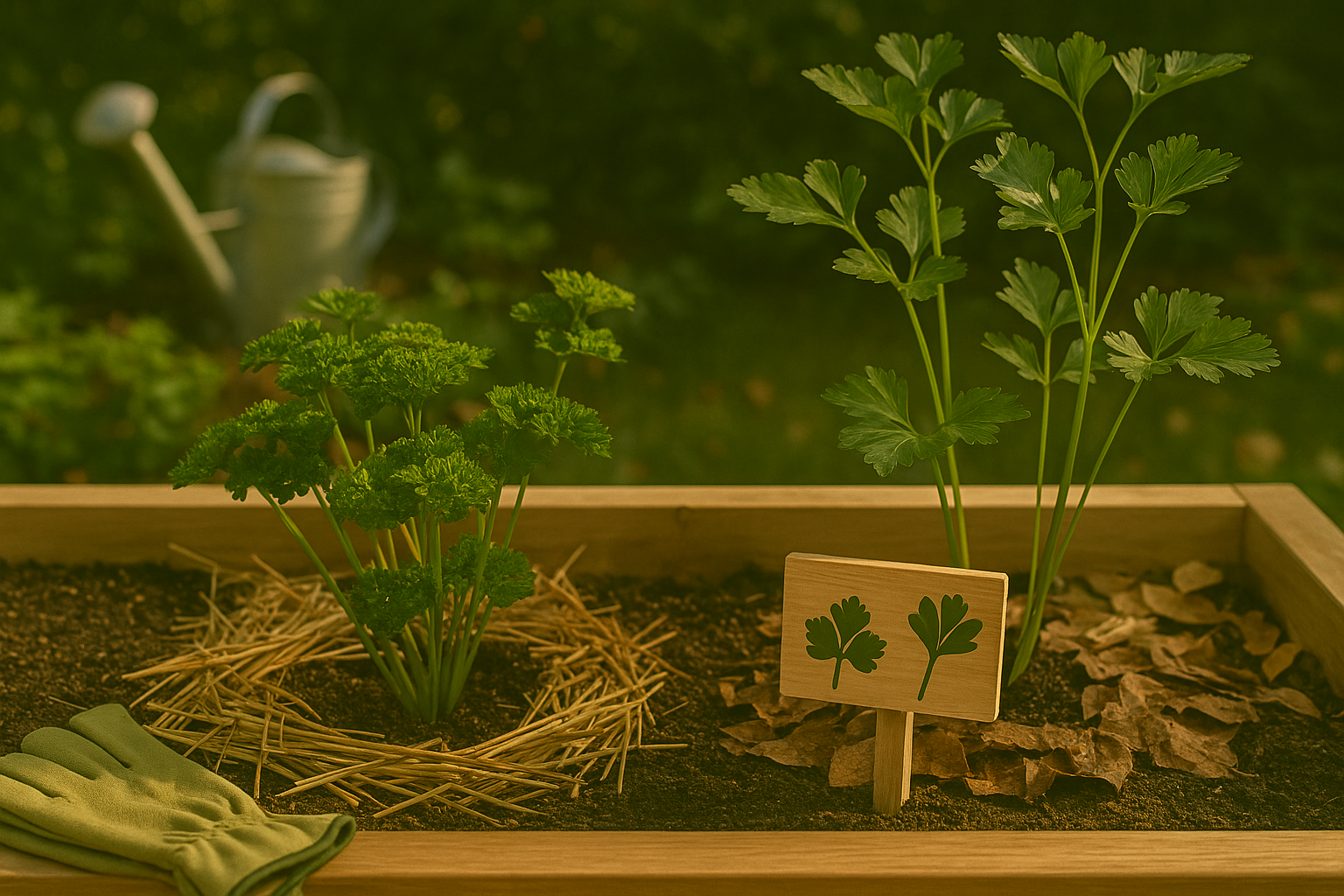
Choosing between curly and flat-leaf parsley depends on your needs in the kitchen and garden. Curly parsley is the more decorative option, adding a frilly, vibrant touch to garnishes and salads. It’s also hardy, often standing up better to colder weather and pest pressures in the garden. However, it can have a slightly tougher texture and a milder flavor, which some cooks find less appealing for cooking.
Flat-leaf (or Italian) parsley, on the other hand, shines with its bold, clean flavor that holds up well in recipes. It’s a favorite for anyone who cooks regularly—think chimichurri, soups, or tabbouleh. It’s also easier to chop thanks to its smoother leaves, but it tends to be a bit more delicate and may need more care in especially hot or dry climates.
If your garden space is limited, choose based on your primary use: curly for presentation, flat-leaf for flavor. But if you can, grow both types to enjoy the best of both worlds—use curly parsley as an edible garnish and flat-leaf in your main dishes.
No matter your choice, fresh parsley instantly lifts the flavor and look of homemade meals. Experiment with both and discover which fits your cooking style best.
